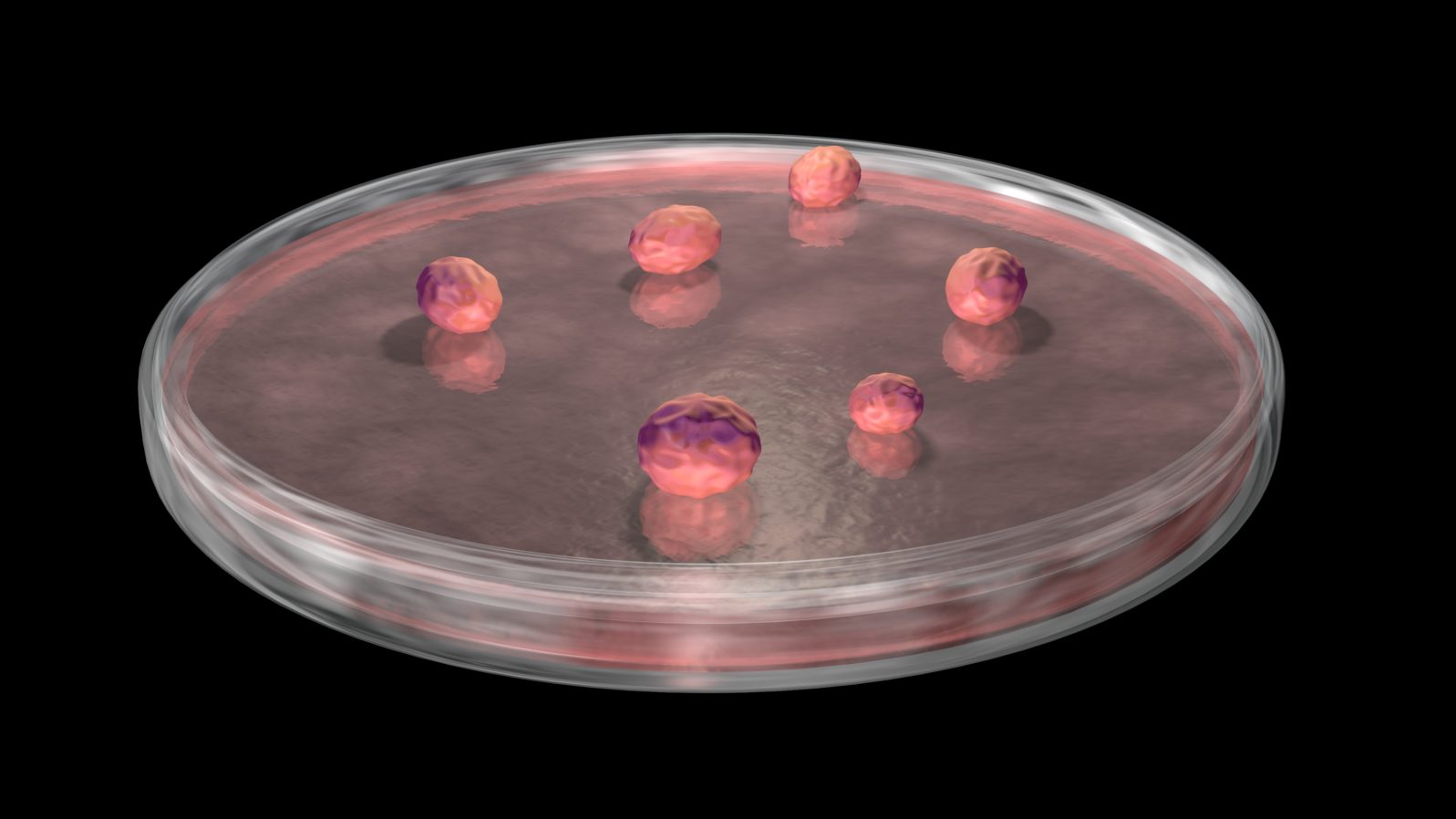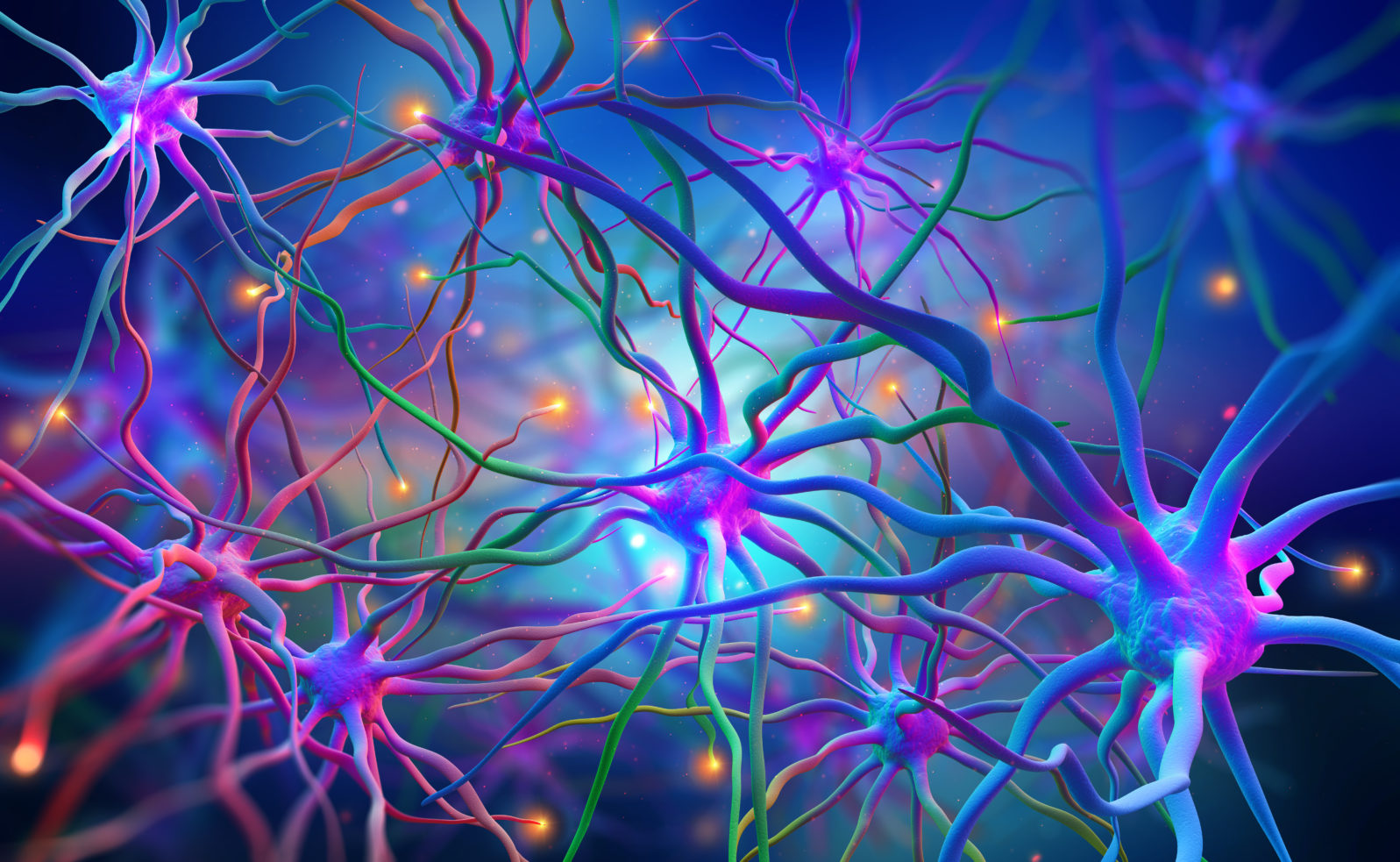Rats with Human Brains? The Real Story About Brain Organoids
Human brain organoids use adult stem cells from volunteer donors; they bypass the use of fetal tissue from abortions
In Margaret Atwood’s MaddAddam Trilogy (2013) , the characters in the first book navigate a dystopian near-future with few ethical boundaries. Chicken has been genetically modified to be nothing more than meat and a mouth. For entertainment, they watch either pornography or televised executions. One of the central characters, the scientist who made the genetically engineered humans, ends up unleashing a synthetic pathogen intended to rid the world of evil.
The excesses are reminiscent of Earth as described in the Flood narrative in the Bible (“Now the earth was corrupt in God’s sight and was full of violence.” Genesis 6:11). As in the Biblical account, a “flood” occurs when the synthetic pathogen ends up killing most of humanity. The remaining humans encounter Pigoons, pig-like creatures with human brains. The Pigoons resulted from bioengineering experiments that predated the “flood.” Originally at odds with humans, the Pigoons eventually form an alliance with the remnant of humanity and with the Crakers, a bioengineered human species.
So what is a human brain organoid?
In the same year that the third book in the trilogy was published (2013), in the real world scientists published research on the creation of cerebral organoids, or what the media likes to call “mini-brains.” They are not actually mini brains, but rather three-dimensional spherical clumps comprised of some of the types of cells found in the brain.
Since then, brain organoids have been used to investigate drug interactions, study Zika viral infection, and observe how certain cells in the brain develop. However, brain organoids in a lab dish are not attached to a body, so they are not receiving sensory input, which is needed to stimulate cell growth and connections in the developing brain. Also, brain organoids cannot metabolize nutrients, another important factor in brain development.

For these reasons, researchers have tried to integrate human brain organoids into mouse and rat brains to study these processes in vivo. In 2018, researchers at the Salk Institute for Biological Studies in LaJolla incorporated human brain organoids into the brains of adult mice. Mice, however, have a short lifespan, limiting the number of studies that canbe done on an adult mouse. Furthermore, researchers were interested in transplanting brain organoids into young animals, in hopes that — as the animals’ brain developed — the human brain organoid would better integrate with the animal’s brain.
In an experiment recently published in Nature, scientists at Stanford University implanted a genetically modified human brain organoids into a rat pups’ brains. They demonstrated through MRI imaging, fluorescent labeling, viral infection, and behavior tests that the organoids integrated into the rat brain and affected the rat’s behavior and function:
Human brain cells mature much more slowly than rat cells, so the researchers had to wait for more than six months for the organoids to become fully integrated into the rat brains. When they examined the animals’ brains at the end of that time, they saw that the integration had been so successful that it was almost like adding “another transistor to a circuit”, [Sergiu] Pasca said at a 10 October press conference.
Sara Reardon, “Human brain cells implanted in rats prompt excitement—and concern” at Nature (October 12, 2022)
Since you can’t ask the rat…How do they know it worked?
Researchers used adult stem cells from a human donor that they converted into induced pluripotent stem cells to make brain organoids. These human brain organoids were transplanted into the sensory cortex of an immune-deficient rat pup. The sensory cortex is where the brain processes signals from sensory inputs areas, such as the whiskers. From there, researchers compared the brain organoids in the rat with the brain organoids in the lab dish using MRI, fluorescence, and staining. The transplanted organoids were larger and more active than the ones in the lab.
To test how well the human brain organoids integrated with the rat’s brain, researchers conducted an experiment in which they infected the organoids with a rabies virus. They found that the virus integrated into the rat brain and was activated by rat’s tissue, showing that the organoid interacted with the rat brain.
To see whether the organoids could affect the rat’s behavior, researchers genetically modified the brain organoids to respond to a light stimulus from a fiber-optic cable that they embedded in the rat’s brain. Then they trained rats to drink from a water dispenser whenever they shined a blue light, but not to drink when they shined a red light. The research article says that on the first day of the experiment, the rats did not show a difference in drinking when the red and blue lights were on. However, after 15 days, the rats that had the genetic modification drank more when the blue light shone compared to the red light. The rats that did not have the genetic modification did not show a difference as to when they drank from the dispenser.
Finally, researchers wanted to show a proof-of-concept that the integrated organoids can be used to study developmental problems. They created human brain organoids from a donor with Timothy syndrome. While the organoids in the lab dish did not look different from those in prior studies, the implanted ones did not grow as large, and the neurons fired differently compared to the researchers’ previous studies with implanted organoids.
Organoids as a more ethical choice — but what about the rats?
Brain organoids are an appealing alternative to more ethically problematic sources of cells. For one thing, most brain organoids are made from induced pluripotent stem cells (iPSCs) instead of embryonic stem cells. Induced pluripotent stem cells do not require the destruction of a human embryo to obtain the stem cells. So long as the donor consents to using their cells, iPSCs are an ethical source of stem cells for experiments.
Brain organoids are an alternative to using human fetal neural cells, which typically come from aborted fetuses. The use of fetal tissue for research purposes has been legal in the U.S. since 1993; however, fetal tissue research is ethically contentious because it is inextricably tied to elective abortions. Kidney, heart, liver, and brain organoids all offer alternatives to fetal tissue and often tend to be better experimental models. In order to receive an NIH grant involving the use of fetal tissue, researchers now how have to explain why they cannot use one of the other alternative models in their research.
According to a report published in 2021 by the National Academies of Science, Engineering, and Medicine, human brain organoids lack some of the fundamental properties that would result in intelligent creatures like Atwood’s Pigoons. This is the case, even if one assumes that consciousness emerges from the brain, which is itself a problematic assumption.
However, there are some ethical issues with human-animal splicing and the creation of human-animal chimeras. For one, no one knows what the human brain cells are doing to the animals. The animal may be sensing or perceiving the world in very different ways from what its brain can handle. This has implications for animal cruelty as well as experimental knowledge.
TV series Pinky and the Brain (1995–1998) took a humorous look at the dystopian concepts:
The authors of the research point this problem out when discussing the limitations to their study. The organoids still lack fundamental cells, such as microglia, endothelial cells, and others that are necessary components of the brain. The authors are unsure how the lack of certain key features in the human brain organoids affect the way the signals are passed from the organoids to the rat brain. Additionally, other researchers have point out that transplanting human organoids (as opposed to growing them in a lab dish) is still too expensive and labor-intensive to be a practical method for many types of studies.
While Atwood’s story is fiction and intelligent pigs or rats may not even be possible, the caution against unbridled research is important. Organoids can be an ethically desirable alternative to other types of research models, but cross-species experimentation needs appropriate guardrails. There are many unknowns with brain research, which means that its risks and benefits are still difficult to weigh out.
You may also wish to read:
Can We Make Brains in a Dish? Can we make MINDS in a dish? Experiments with brain organoids have left many wondering whether we should be concerned about creating brains-in-a-dish. While experts can’t agree on the definition, scientists and ethicists generally agree that no one has created consciousness in a lab. (Heather Zeiger, November 2020)
and
Are lab-grown human brains the Next Big Thing? Neurosurgeon Michael Egnor thinks the hopes for humanly conscious lab-grown brains are faint indeed. “Neural tissue grown in a lab cannot have intentionality unless it has sense organs,” Egnor says, “But such manufactured intentionality can only be about concrete things, not abstract things.” (July 2019)
